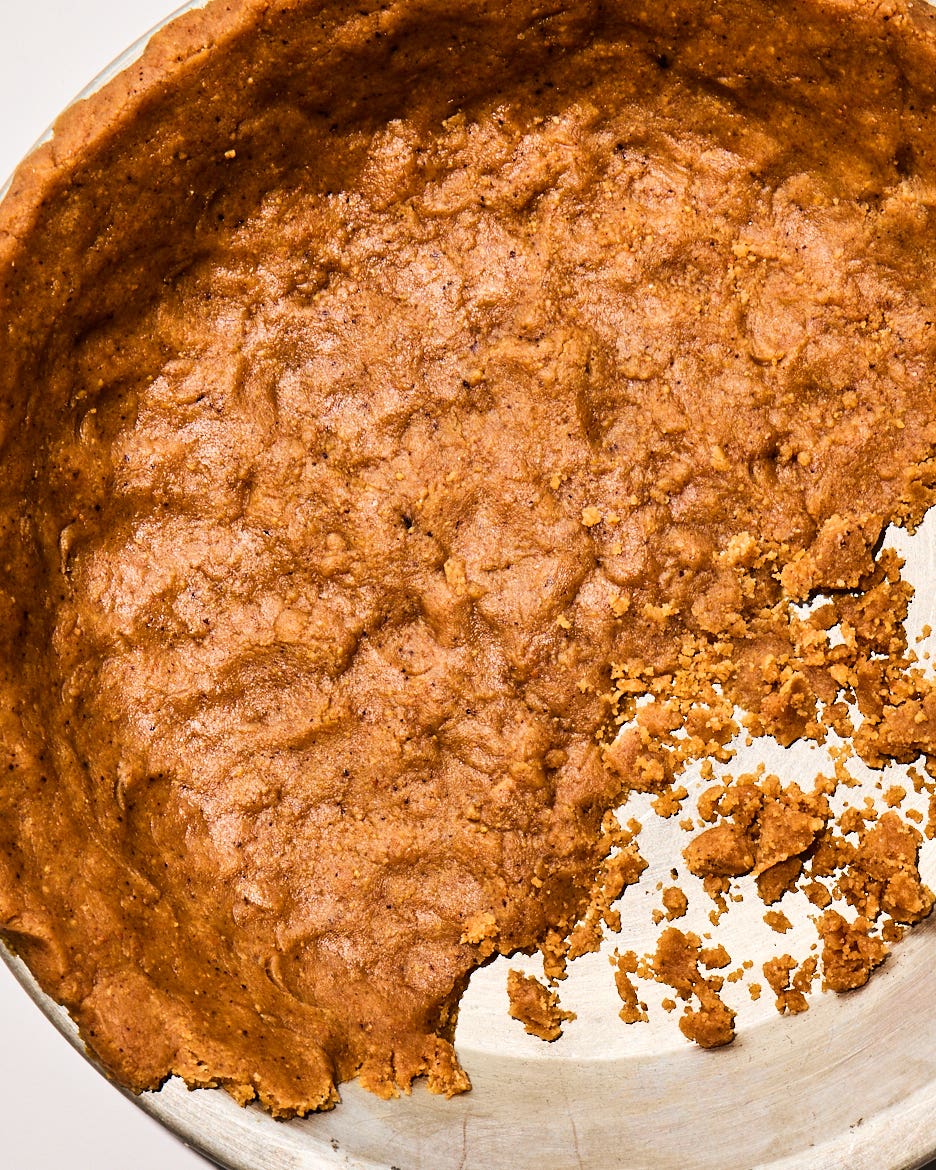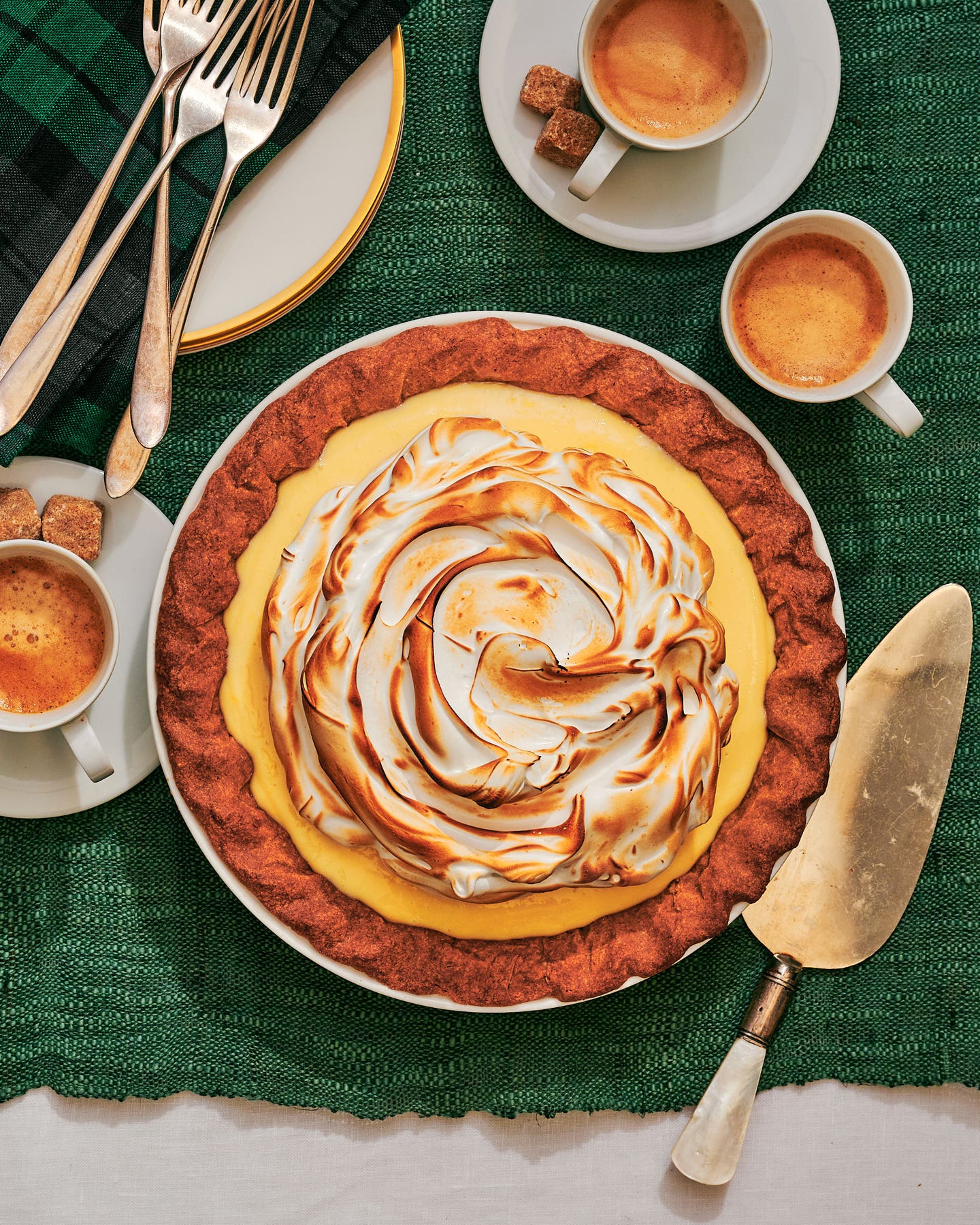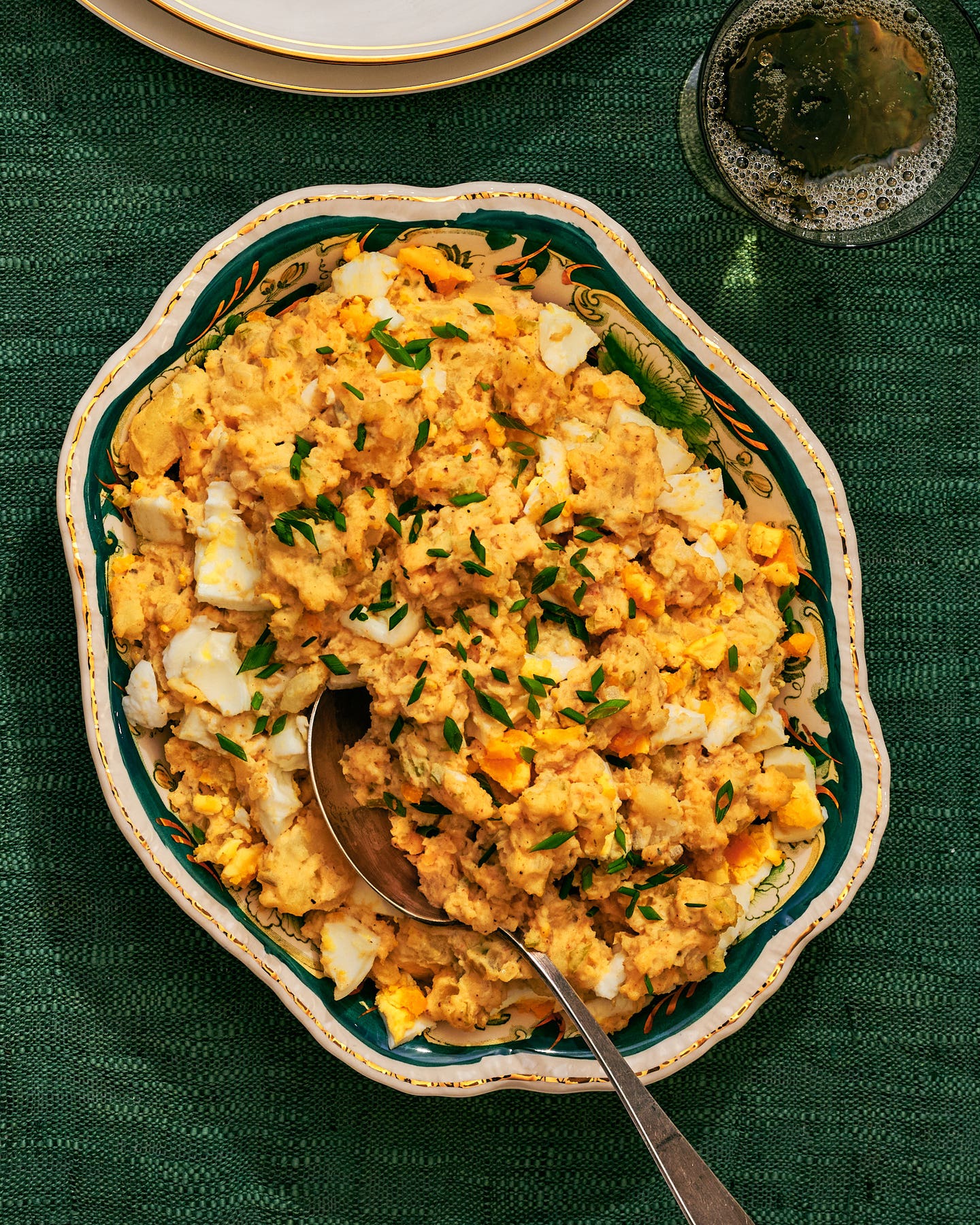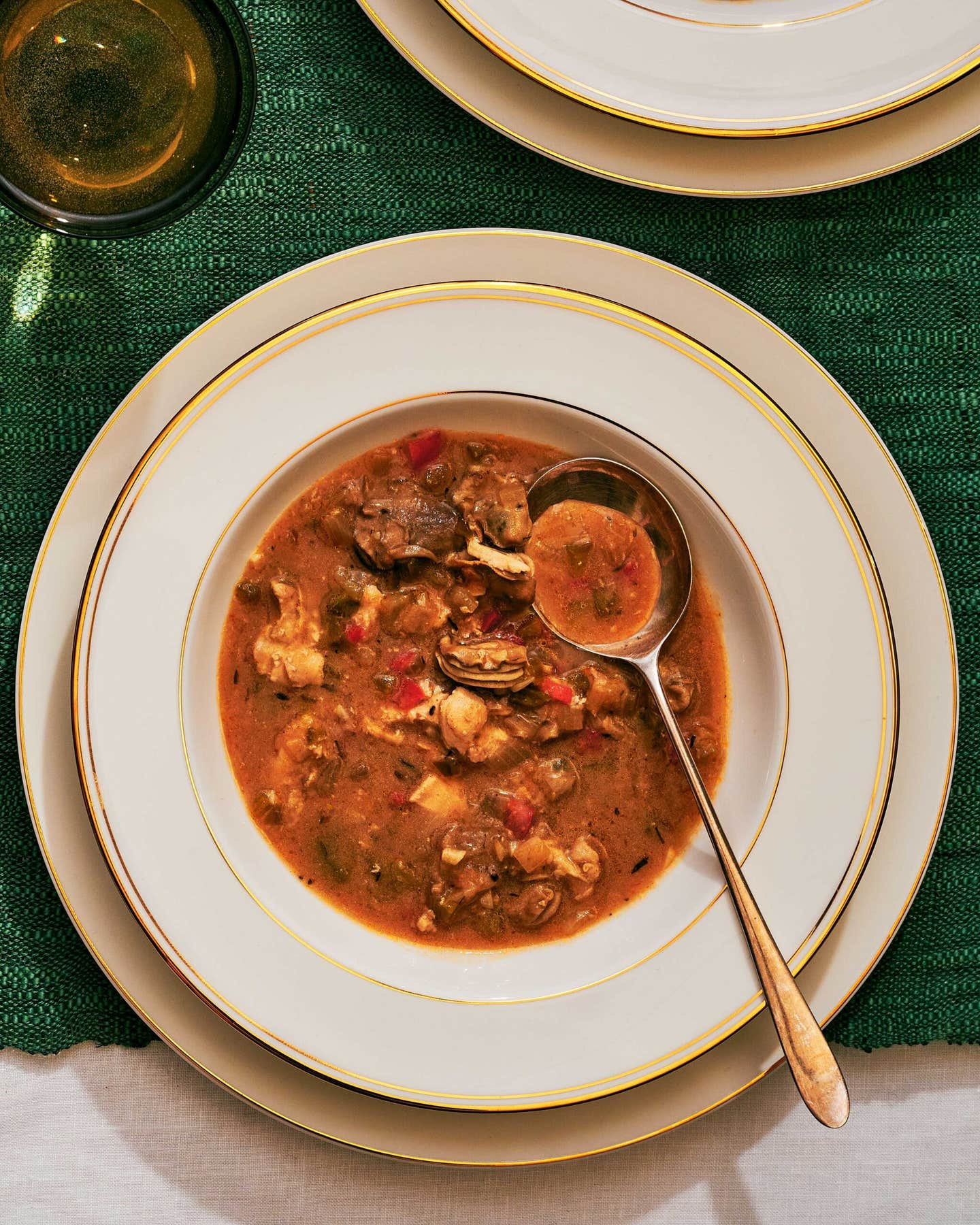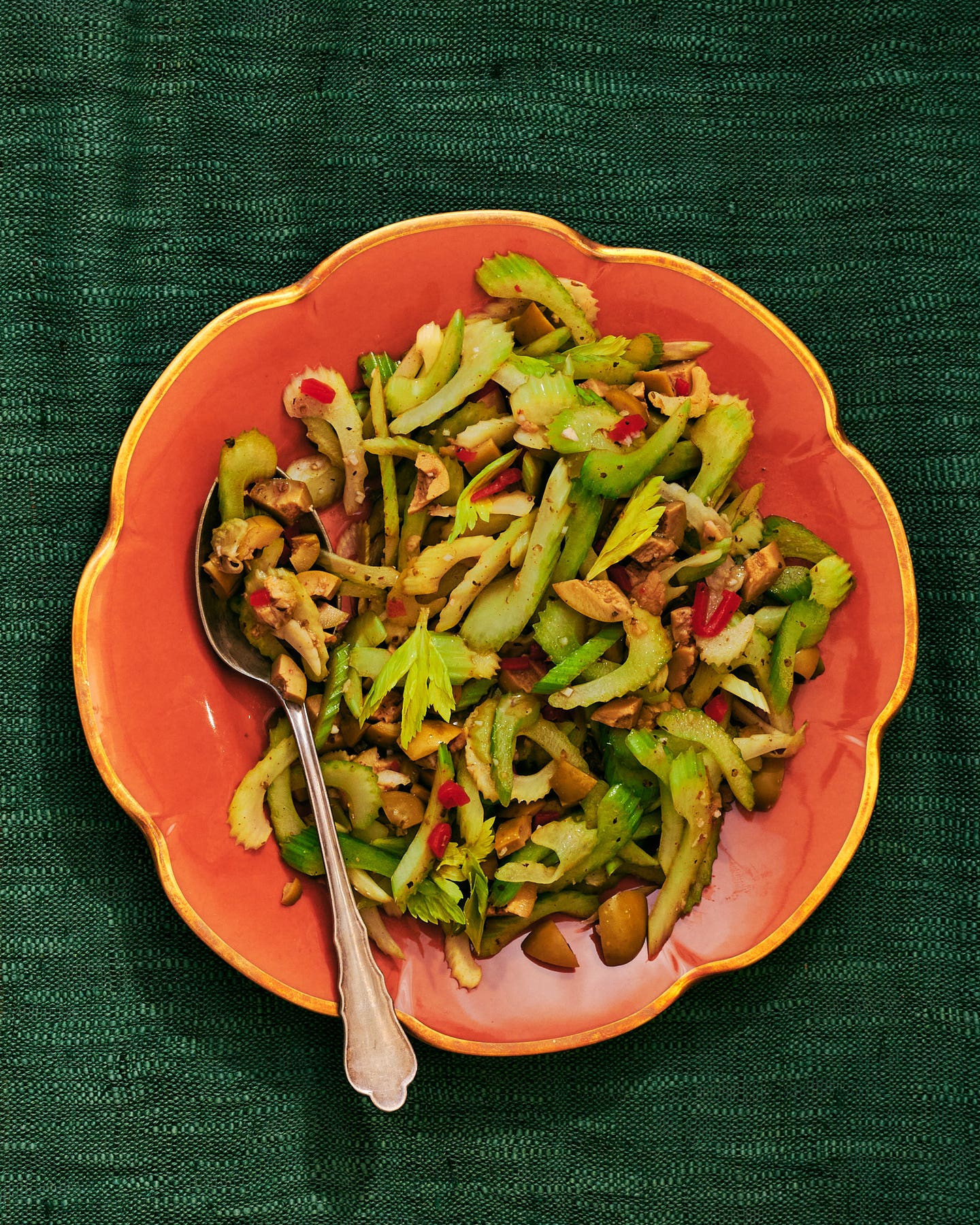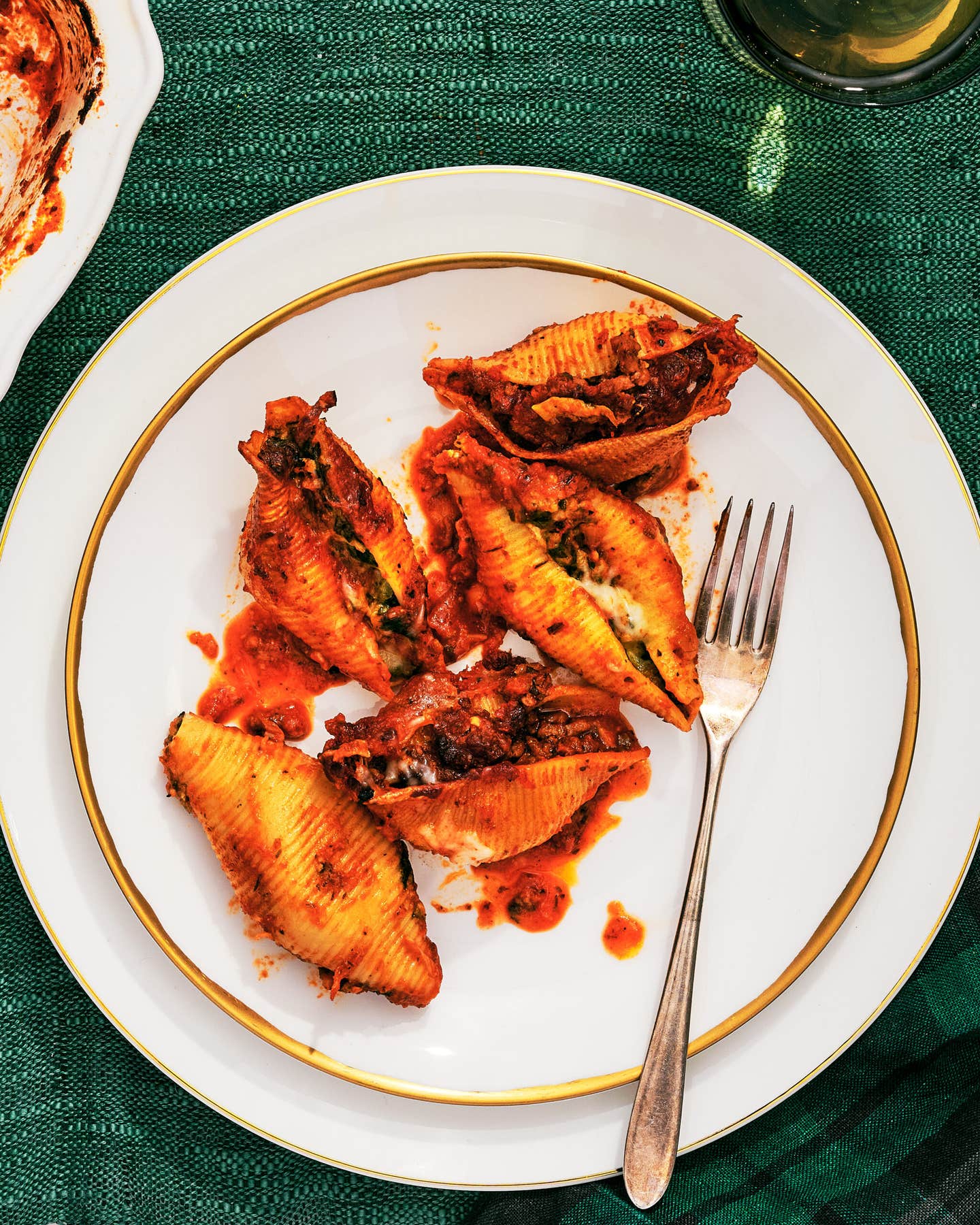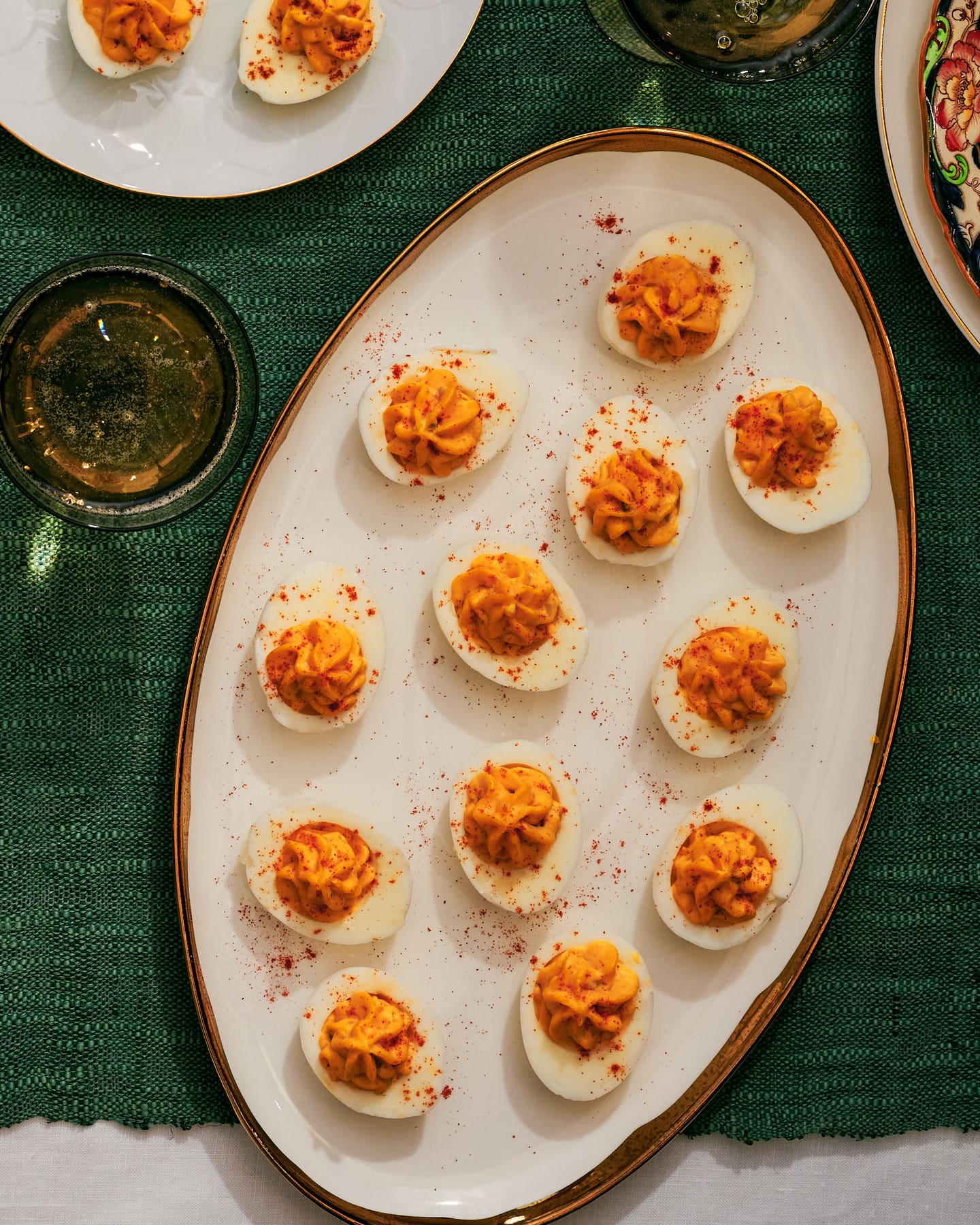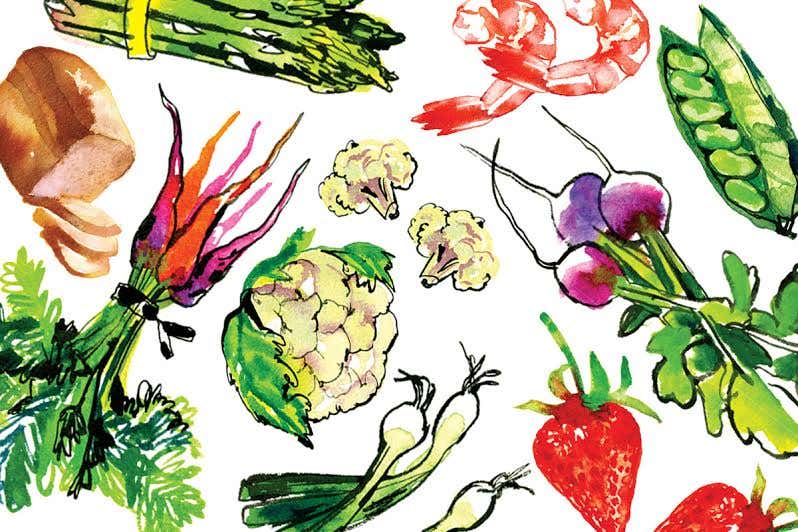
Presenting Beggar’s Chicken
This Chinese classic may have uncertain origins, but its succulence is guaranteed.
A waiter dressed in a rich blue jacket with gold trim wheels a linen-draped cart through the elegant Man Wah restaurant on the top floor of Hong Kong's Mandarin Oriental Hotel. Arriving at the table on a heavy silver tray is one of the chef's great specialties. It is not some glorious whole fish, though, or complex meat dish surrounded by elaborately carved vegetables: It is, to all appearances, a mound of dried mud, dark and crackled. The waiter stops at a windowside table, and hands a heavy red-lacquered mallet to the guest of honor. She stands, positions herself next to the cart, and raises her arm…
According to the tale told to tourists and repeated in countless Chinese cookbooks, the succulent clay-enclosed dish called beggar's chicken was invented accidentally, in the mid-18th century, near the city of Hangzhou in eastern China (though different versions set the story in Shanghai or Beijing—or in the town of Suzhou, south of Shanghai). A beggar, it is said, stole a chicken from a local farm. Carrying it away, he stopped by the side of a pond and built a fire, planning to roast it on a spit. Suddenly, he heard the sound of horses approaching. Fearing capture, he quickly wrapped the chicken in lotus leaves pulled from the pond, buried his prize in the mud near the flames, and ran away. Hours later, he returned and dug up the chicken—to find that the heat of the fire had baked the mud to a hard shell. He cracked it open and discovered a delicious dinner, slow-roasted in its own juices. It is more likely, of course, that some skilled chef of the era simply figured out the cooking process, which parallels the old European methods of baking food in crusts of salt or bread dough. The dish is also known as "rich and noble chicken", suggesting that the folklore of its origins is probably just that.
The mallet descends with a smart thump, breaking a neat hole in the clay. The waiter retrieves the instrument and, covering the shell with a starched white napkin, pounds away with deft motions. He then removes the cloth to reveal glimpses of the next layer—Chinese newspaper, soaked in the juices of the chicken and transformed into whispery folds of delicate tissue paper. Next, he carefully lifts a green-and-brown package from the rubble. This is the chicken in its final wrapping—an insulation of lotus leaves, smelling faintly of tea. An earthy aroma wafts up as he winds the leaves back, exposing the rich brown skin of the chicken. The flesh is so tender that it literally falls apart as he removes all the bones, leaving on the plate a fragrant blend of chicken pieces, Chinese vegetables, and the spicy juices laced with sweet rice wine. It tastes every bit as exquisite as the ceremony of its preparation has promised.
The Man Wah is a long way from that apocryphal Hangzhou pond—and both are very far indeed from an American home kitchen. Can beggar's chicken be made here, by cooks who are neither beggars nor skilled Hong Kong chefs? Of course, says Eileen Yin-Fei Lo. A noted cooking teacher and author (her most recent book, The Chinese Way, is due out this month from Macmillan), Lo recently offered to visit the saveur kitchen to show us how it's done.
After rubbing the chicken with a marinade of ng ka pay (a 96-proof Chinese spirit made from sorghum), cinnamon, and star anise, she stuffed it with stir-fried black mushrooms, onions, pork fat, and spices. We were puzzled by one ingredient—a stringy, brown, salty-sweet substance Lo pulled from a mysterious-looking package labeled simply "preserved vegetable". She handed me a sticky sample from the cutting board. "Mustard greens," she said, "salted and sun-dried." She wrapped the bird in a large, papery, moistened lotus leaf (we'd found them dried, in Chinatown), and then in parchment paper. Because pond mud was difficult to come by, Lo advised using a flour-and-water dough to seal in the moisture—the key to the dish's success. She pressed the dough out on the counter, and pulled a thick layer over the chicken, crimping the seams tightly. Then into the oven it went. When it emerged four hours later and we opened the package—with rather less practiced skill than that Hong Kong waiter—we were dazzled. All the flavors and textures of the chicken and its stuffing melted together, in vivid tribute to Eileen Lo's modern culinary expertise—but with an echo of Chinese legend faintly discernible in the background.
Keep Reading
Continue to Next Story



